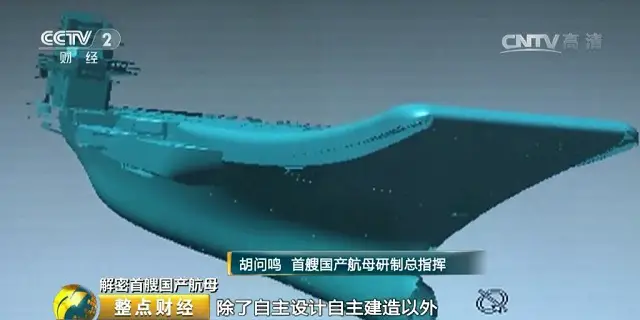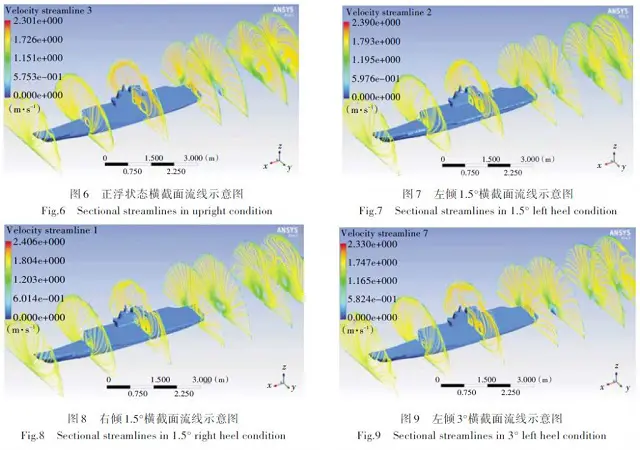Breaking news
Construction of China's 2nd Aircraft Carrier for PLAN Progressing Faster than Expected.
| 2017
|
|
|||
| a | |||
|
Naval Industry News - China
|
|||
|
|
|||
|
Construction of China's 2nd Aircraft Carrier for PLAN Progressing Faster than Expected
|
|||
|
Story originally published in French by our colleagues from East Pendulum
The construction of the People's Liberation Army Navy (PLAN) second aircraft carrier (the first built indigenously in China) is progressing at a good pace and is now ahead of schedule according to the program director. The information was revealed in an interview conducted by Chinese national television CCTV. The vessel was launched in April this year. |
|||
|
|
|||
 Black smoke at the chimneys was spotted for the first time on 18 May 2017, less than a month after the second Chinese aircraft carrier was launched (Photo: 西北狼 216) Black smoke at the chimneys was spotted for the first time on 18 May 2017, less than a month after the second Chinese aircraft carrier was launched (Photo: 西北狼 216) |
|||
|
Program Director HU Wen Ming is also the CEO of the Chinese naval group CSIC, which owns the Dalian shipyard where the new aircraft carrier is under construction. HU says propulsion system tests are currently underway. The first and third boilers are already on, and the steam turbines will soon follow.
Dockside testing, one of the major milestones in the project with the Chinese aircraft carrier set to operate on its own generators, could start within the next month. "It's earlier than we anticipated," says HU. |
|
|
|||
|
CCTV video
|
|||
|
Once dockside tests are completed, the aircraft carrier will start its sea trials campaign. The compatibility of the ship with its air wing and the weapon systems are set to be tested and evaluated.
For the time being, no delivery date has been officially communicated by the PLAN, but East Pendulum believes that commissioning could happen during the second half of 2019. |
|||
|
|
|||
 The digital model of the 2nd Chinese carrier (Image: CCTV-2) The digital model of the 2nd Chinese carrier (Image: CCTV-2) |
|||
|
In addition to the project's progress, the program director also revealed further details on the construction of the 2nd Chinese aircraft carrier.
For example, at the peak of the work, more than 5,000 technicians and engineers worked simultaneously on board the ship. These men and women come from 532 different Chinese companies, of which 412 are not from the defense sector. The aircraft carrier's project not only accelerated the transfer of technology from military to civilian companies, enabling them to upgrade their range and capacity, but above all reinforced the level of civil-military integration of Chinese companies for other major projects ahead. |
|||
|
|
|||
 Studies of the flow of the aircraft carrier according to the roll level of the ship. Studies of the flow of the aircraft carrier according to the roll level of the ship. |
|||
|
In addition, HU indicates that all Tier-1 components and materials are designed and manufactured in China, demonstrating the country's full capacity to launch and carry out this type of project in a fully autonomous manner.
Following the transformation of the former Soviet aircraft carrier Varyag into the Liaoning, and the construction of a new aircraft carrier of local design, the CEO of CSIC believes that Chinese manufacturers are now able to design and build "any type of aircraft carrier, thanks to the skills acquired so far and the pre-studies launched 20 years ago". "The team with an average age of 36 is now mature," says HU. China is actually planning to build a 3rd aircraft carrier (at least), this time in CATOBAR configuration but still with a conventional (non-nuclear) propulsion system. Two catapult systems, one steam and the other electromagnetic, are currently being evaluated at the Xincheng Aircraft Training Center. The Jiangnan Changxing Shipyard in Shanghai is also in the process of expanding its facilities to prepare for the launch of the project. First steel cut may have already taken place. This 3rd aircraft carrier could join the Chinese Navy by 2022 to 2023, according to East Pendulum's latest estimate. |
|||


























